|
HOME: www.hiltonpond.org |
|||
THIS WEEK at HILTON POND Subscribe for free to our award-winning nature newsletter (Back to Preceding Week; on to Next Week) |
Our 30th Costa Rica-East (Paraíso/Ujarrás) Contact Holbrook Travel to register today! Come be an integral part of a real citizen-science project! |
FEBRUARY 2018: NOTE: Having returned the last week in January 2018 after our Costa Rica hummingbird banding expedition, we spent much of early February getting caught up at Hilton Pond Center--and we weren't just catching up on what we missed during the ten-day Neotropical trip. No, we were also cranking out several belated installments of "This Week at Hilton Pond." It seems we had fallen 'way behind on our postings in the last quarter of 2017--mostly because of personal and family illnesses, travel, bereavements, holidays, and an unfortunate computer melt-down. With the latest edition below (our 669th since we started in February 2000!) we are finally up to date--well, except for our write-up about the January 2018 Costa Rica expedition, which always takes a long time to compile in words and photos. (We're working on THAT extensive account right now and will let folks know when it's finished.) In any case, read on to learn about some natural things that happened at Hilton Pond Center during a short 28 days in February 2018. We also acknowledge last year's donors to "The Ela Fund" and outline how funds will be allocated to honor and memorialize the life of Elaida Mayorga Villanueva. All text, maps, charts & photos © Hilton Pond Center
All text, maps, charts & photos © Hilton Pond Center -- WHITE-FOOTED MOUSE DAY -- Once again on the Second of February at Hilton Pond Center we had to contend with a barrage of media reports from some fat and sassy northern Groundhog, Marmota monax, whose handlers claim can predict winter's duration for far-off places like York SC. There was a time when we put stock in the forecasts of Pennsylvania's Punxsutawney Philbut after seeing his air-conditioned burrow and those studio lights that could be switched to make--or not make--a shadow, we have come to trust ever-reliable prognostications of Hilton Pond Harry, a weather-wise White-footed Mouse, Peromyscus leucopus (top photo). Harry has yet to fail in properly predicting how soon winter will end in the Carolina Piedmont. Suffice it to say at the crack of dawn on 2 Feb 2018 Harry emerged from his NATURAL nest out behind our old farmhouse and because of lingering clouds from overnight showers was NOT able to see his shadow. The true verdict: Our brutal Piedmont winter of 2017-18 shall soon come to an end. Although Harry's forecast was the "polar opposite" of the one made that morning by some pampered Whistlepig up in Western Pennsylvania, we stand behind the mouse's prediction. This does not mean there won't be a cold night or two or that we'll see no more snowflakes this year over Hilton Pond, but rest assured you very soon will be able to break out shorts and flip-flops for a magnificent Southeastern spring. All text, maps, charts & photos © Hilton Pond Center
All text, maps, charts & photos © Hilton Pond Center -- 67,000 BANDINGS -- The Second of February WAS a big day at the Center--and not just because it was "Groundhog Day." Hilton Pond Harry, our ever-reliable White-footed Mouse, did correctly challenge Punxsutawney Phil's prediction that the Carolina Piedmont should brace for six more weeks of winter, but a significant milestone was also reached: At mid-morning on 2 February we captured an American Goldfinch (that's him in the photo below) that was the 67,000th bird banded at Hilton Pond Center in the past 37 years. Ironically, several birds just before that we had banded our 11,000th goldfinch since 1982. That's a LOT of birds, and a LOT of goldfinches!
All text, maps, charts & photos © Hilton Pond Center Yesterday's #67,000 was a male, identifiable by primary and secondary feathers that were jet black. (Females typically have wing feathers more brownish and dull, although some older individuals can fool you.) Winter males often have at least a few black feathers on the forehead or crown, as shown in the photo. Both females and young males have a bend to the wing that is salt-and-pepper in appearance; this bend is actually the bird's wrist--NOT its shoulder (which attaches at the body). With 11,000 American Goldfinches banded at the Center we are now averaging 298 per year--the annual record was 838 back in 2007--making AMGO our most commonly banded local species. The winter of 2017-18 is going slowly for the species with only 142 AMGO crossing the banding table thus far. (Normally we would have two or three times that many by the end of February; so far none of several "thistle socks" we deploy, above right, have had much traffic.) Although American Goldfinches apparently nest on or near our property and seem to be breeding with increasing regularity in the Carolina Piedmont, the vast majority of our winter goldfinches apparently are migrants from up north. In fact, AMGO we banded in winter at Hilton Pond have shown up in Maryland, Upstate New York, and as far away as Maine, while one banded in Ontario was re-trapped here in a later winter. All text, maps, charts & photos © Hilton Pond Center
All text, maps, charts & photos © Hilton Pond Center -- RAIN RELIEF -- On 4 Feb 2018 Hilton Pond Center got some MUCH-needed rainfall--1.55" to be exact, some of it coming down pretty hard. (The LED screen on our digital rain gauge actually read "It's raining cats and dogs!") As usually happens during these frog-stranglers, run-off from surrounding farmland flows into the otherwise greenish pond, bringing muddy red-brown sediment with it (above). The downpour moved birds toward feeders and we ended up catching 22 American Goldfinches, primarily in hanging traps baited with black sunflower seed. In ground traps we also caught one Chipping Sparrow, one White-throated Sparrow, and one Mourning Dove. (In exchange for being banded these birds got to come in out of the driving rain for a little while--even though WE got thoroughly soaked while clearing traps!) All text, maps, charts & photos © Hilton Pond Center
All text, maps, charts & photos © Hilton Pond Center -- MERGS -- Our annual Valentine's Day observance at Hilton Pond Center was enhanced today on 14 Feb 2018 by the appearance of a pair of Hooded Mergansers displaying and responding to each other (perhaps amorously). Birds do it, too! Like many waterfowl, mergansers can be a little skittish, so we weren't able to get close enough for a clear photo. The image at top--taken from far across Hilton Pond and enlarged considerably--was the best we could do. It still nicely illustrates strong sexual dimorphism in this species, with the male's black-and-white head differing significantly from that of his brown-hooded mate. Hooded Mergansers (the 39th species on the Center's 2018 Yard List) don't visit the pond every year, so we were pleased to see them. They do breed in the Carolinas--apparently not commonly--nesting high up in tree cavities or in Wood Duck boxes. Some of the Piedmont's winter mergansers are undoubtedly migrants that return to areas of greater population density around the Great Lakes.
All text, maps, charts & photos © Hilton Pond Center Superficially, Hooded Mergansers look a little like some other diving ducks, but their narrow serrated bills (above) are well adapted for grabbing and holding wiggly fish, large aquatic insects, and crayfish. Mergansers swim very well but with legs far back on their bodies they are awkward on land. All text, maps, charts & photos © Hilton Pond Center
All text, maps, charts & photos © Hilton Pond Center -- COUNTING BACKYARD BIRDS -- The Great Backyard Bird Count (GBBC)--sponsored by Cornell Laboratory of Ornithology, National Audubon, and Bird Studies Canada--was held 16 through 19 Feb 2018. Each year we participate at Hilton Pond Center and encourage friends and neighbors to join in this citizen science project for at least one day. The more observations people submit, the better our understanding of birds around us. It's free, easy to join, and simple to report via the eBird Web site--so no excuses for next year! Don't let "YOUR" birds and YOUR backyard get left out! International results of the 2018 Great Backyard Bird Count--along with info about how to participate in 2019--are at GBBC. In collaboration with the 2018 Great Backyard Bird Count, here at Hilton Pond we tallied the following 32 species on 17 February:
All text, maps, charts & photos © Hilton Pond Center
All text, maps, charts & photos © Hilton Pond Center -- AVIAN SIGNS OF SPRING -- Hilton Pond Harry, the Center's prognosticating White-footed Mouse, predicted on "Groundhog Day" that winter was over for the Carolina Piedmont. We have no reason to doubt his word--especially since on 17 February 2018 there were signs spring already is in the air around Hilton Pond. For one, the Red Maples were already in full bloom. Perhaps even greater evidence came in the form of bird courtship. For the first time in years we had a pair of Belted Kingfishers (female above, with both blue and rust-colored belts) perched and fishing together on the far side of Hilton Pond. And, in a tree high above the Center's old farmhouse, two Turkey Vultures were hanging close and eyeballing each other on a horizontal limb.
All text, maps, charts & photos © Hilton Pond Center Wet weather, gray skies, and tree branches made it hard to get a decent vulture photo--especially through raindrops on the window glass--but the attached image shows the TVs, Cathartes aura, mostly in silhouette. The bird on the left is preening, while the other--whose naked red head you can barely make out--was staring down a Black Vulture on an adjoining limb. (The TVs had been sitting much closer together before we took the photo.) Earlier today the pair was swooping low over Hilton Pond, perhaps in courtship flight. We wonder if they also were checking out as a nest site the hollow stump left behind when an ancient and enormous White Oak toppled near the pond margin several years ago. It would be a perfect protected spot for vulture eggs and chicks. (Did you know many vultures are "cavity nesters?")
All text, maps, charts & photos © Hilton Pond Center By the way, both birds in the photo show perforate nostrils that are characteristic of Cathartes spp. (i.e., TVs, Black Vultures, and California Condors). In other words, you can see straight through the nose hole in the upper mandible, as shown in our skull photo just above. Conventional wisdom is that perforate nostrils are easier to keep clean--an important factor for any bird that goes around jamming its bill deep into body cavities of dead and decaying animals. A Turkey Vulture's nostrils are particularly large--perhaps related to its enhanced ability to detect odors from the ground as it soars high over Hilton Pond. All text, maps, charts & photos © Hilton Pond Center
All text, maps, charts & photos © Hilton Pond Center -- GONE FOREVER -- One hundred years ago on 21 February 1918, Carolina Parakeets became extinct when the last of their species died at the Cincinnati Zoo. Incas was his name. It saddens the heart and troubles the mind that this colorful member of the Parrot Family--once found across eastern North America from Florida to New York--no longer can be seen flying free. (Imagine a flock of parrots like the ones in early naturalist Mark Catesby's image above, coming regularly to a seed feeder at Hilton Pond Center!) Habitat destruction was certainly a factor, but the Carolina Parakeet more likely was lost to over-hunting because of its appetite for agricultural products . . . and because fashionable ladies of the day wanted parakeet feathers--or entire stuffed 'keets--in their hats.
Amazingly, Honeybees may even have played a role in the demise of Carolina Parakeets. When early settlers brought these non-native insects to North America the bees swarmed (above), flourished, and took over large tree hollows parakeets needed for nesting. Although some extinctions come naturally, we should hang our heads in shame to know human beings--despite our big brains--are often more to blame. RIP Incas, the last Carolina Parakeet; we never knew you but miss you just the same. (NOTE: You can view our archived write-up about an interesting relationship between Carolina Parakeets and a certain species of native tree. It's at Installment #137.) All text, maps, charts & photos © Hilton Pond Center
All text, maps, charts & photos © Hilton Pond Center -- RIGHT-OF-WAY UPDATE -- After a series of e-mails and calls from Hilton Pond Center, workers from South Carolina's Department of Transportation finally arrived on 26 February 2018 to begin hauling away mounds of wood chips left behind in December 2017 when a contract crew toppled and ground up numerous mature trees along the Center's road frontage. At one point (above), mulch lined the roadway for more than 25 yards and was piled up to five feet deep. Sadly, it takes a lot of trees to make that much mulch!
All text, maps, charts & photos © Hilton Pond Center Work continued throughout the week as a front-end loader--with some difficulty--lifted tons of limb fragments and wet mulch into trucks that hauled the refuse to a state-authorized dump ten miles away in Newport SC. We appreciate the effort but are stymied as to why workers did not remove mulch that now clogs the culverts under either end of the Center's circular driveway. Also left behind in the right-of-way was a large amount of "tree trash" we personally had to drag from where it fell on Center property during roadside clearing. The story continues--we hope as the highway department returns in March to finish what it started. The loss of several 60-year-old pines and hardwoods in front of the Center's old farmhouse was heartbreaking, and incessant loud noise from the tree-grinding machines spooked away many birds throughout December. Defoliation along the road almost certainly will have impact on our 37 years of on-going field research, but we're happy to say losing those trees does not diminish the overall beauty and charm of Hilton Pond Center for Piedmont Natural History. Despite the tree loss, we remain positive and firmly commuted to our interrelated missions of environmental education, nature research, and conservation. All text, maps, charts & photos © Hilton Pond Center
All text, maps, charts & photos © Hilton Pond Center -- "FOREIGN" COVERAGE -- February ended on a nice note with the publication of a story about Hilton Pond Center in the Smoky Mountain News, a weekly newspaper out of Waynesville NC. The article--which appeared in hard copy and on-line--was penned by Don Hendershot, a Blue Ridge naturalist and journalist we've known for a few decades. Don's column highlighted the Center's 2017 bird banding season--hence the inclusion of our photo above of a Carolina Wren temporarily snared in a mist net. (That the bird was already banded is significant; she's a local "banding junkie" that has been recaptured many times through the years.) All text, maps, charts & photos © Hilton Pond Center
Elaida "Ela" Mayorga Villanueva--wife of our Costa Rican colleague Ernesto M. Carman and close friend to the Hilton Family--passed away far too young in 2017 after battling a recurrence of brain cancer. Ela continued her involvement with ORT until her illness precluded visits to the field, where she had always provided invaluable volunteer help extracting birds from mist nets and documenting hummingbird natural history with her ever-ready camera. Ela was also part of 'Nesto's pioneering in-country research on Unspotted Saw-whet Owls and Cerulean Warblers; until the very end she and he were true partners in many ways. We share Ernesto's sense of loss.
NOTE: We apologize if your name is not listed above. Some contributors to Hilton Pond Center may not have designated their gifts should go to "The Ela Fund." Please contact us at FUNDING to clarify. Don't forget to scroll down for Nature Notes & Photos, 
Checks can be sent to Hilton Pond Center at: All contributions are tax-deductible on your |
|---|
|
"This Week at Hilton Pond" is written and photographed by Bill Hilton Jr., executive director of Hilton Pond Center for Piedmont Natural History
|
|
|
Please refer "This Week at Hilton Pond" to others by clicking on this button: |
Comments or questions about this week's installment? Send an E-mail to INFO. (Be sure to scroll down for a tally of birds banded/recaptured during the period, plus other nature notes.) |

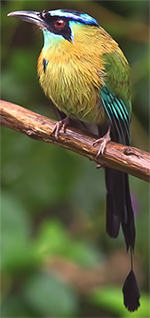
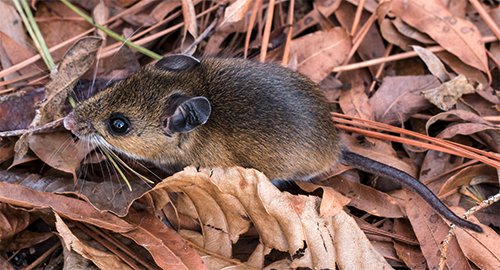
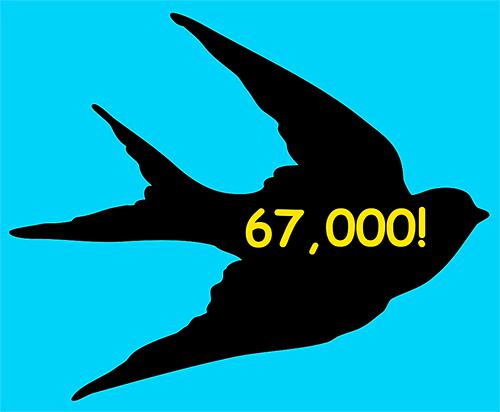
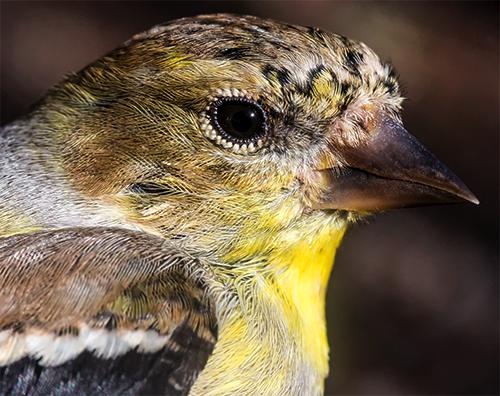
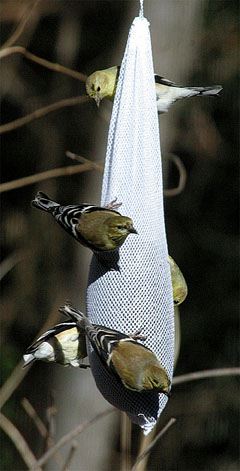 The wrist remains salt-and-pepperish in females, but in late spring or early summer a young male's wing bend molts to become bright yellow and stays that way thereafter. Thus, goldfinch #67,000 was a second-year male hatched last summer.
The wrist remains salt-and-pepperish in females, but in late spring or early summer a young male's wing bend molts to become bright yellow and stays that way thereafter. Thus, goldfinch #67,000 was a second-year male hatched last summer. 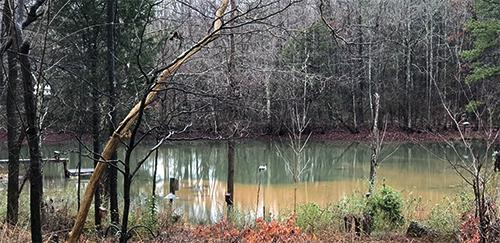
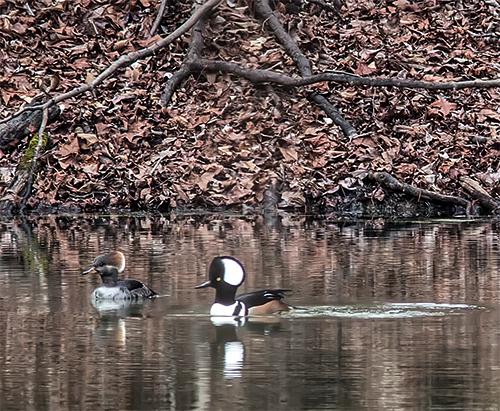
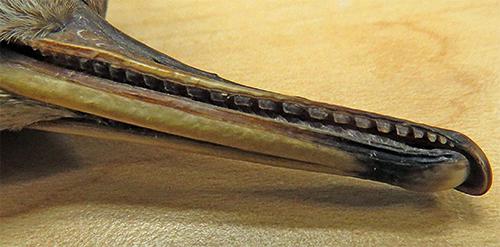

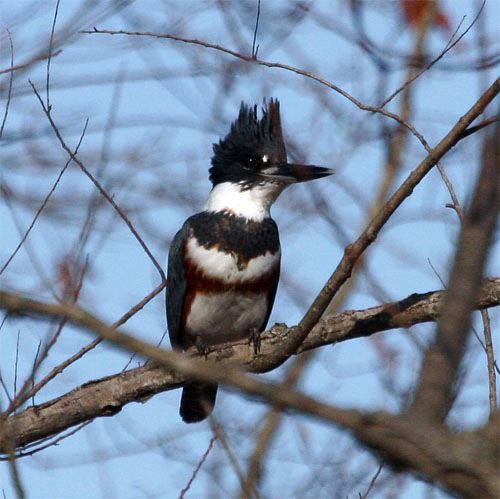
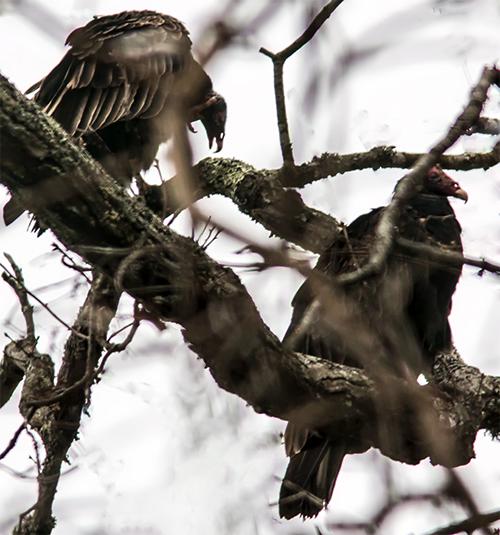
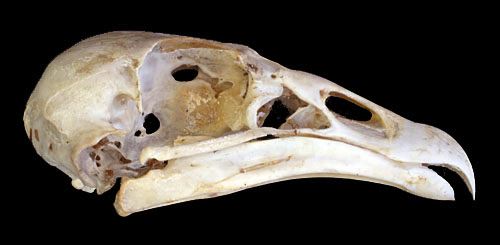
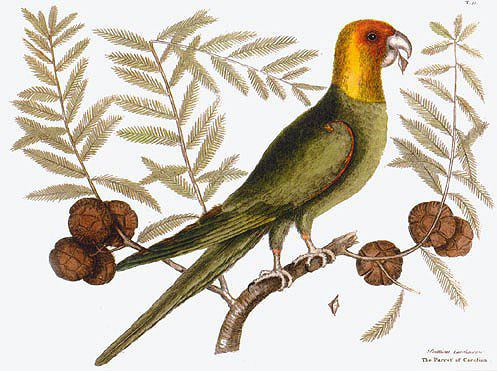
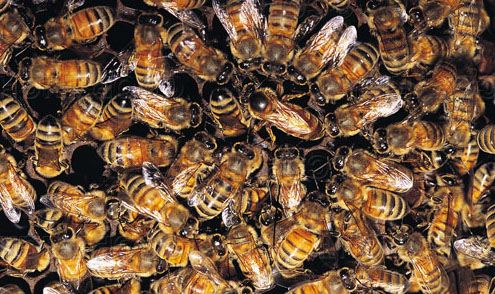




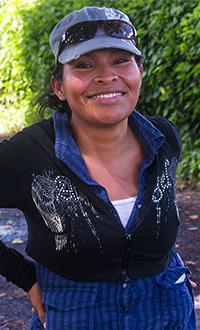 Ela was enthusiastically involved from the beginning with Neotropical aspects of
Ela was enthusiastically involved from the beginning with Neotropical aspects of  During the January 2018
During the January 2018 







 Please report your
Please report your